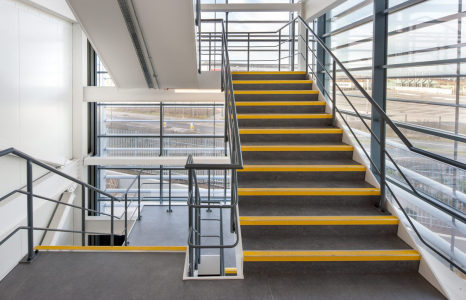Here are 3 key things to consider when specifying the colour of a Stair Edging insert.
1. Visual & Tonal Contrast (LRV)
Adding a Stair Edging immediately establishes a visual contrast to the step edge, but it should also create enough tonal contrast.
It is important to ensure 30 points of visual contrast between the step edge and the floorcovering. Visual contrast is achieved by using the Light Reflectance Value (LRV) of a colour, using a scale of 0 to 100 (how much light is reflected back). This enables all building users to clearly define the step edge and reduce the likelihood of an overstep.
Click here to see the Project Rainbow report and more about LRV
2. Consistency
We've witnessed, more recently, that some installers are opting for different coloured top and bottom step inserts to that of the rest of the flight of stairs. We've also seen installations that contain alternating use of the same 2/3 colours, sometimes even within the same channel.
While we acknowledge the logic and the style aspiration, we advise against this after conversations with the Royal National Institute of Blind People (RNIB). The use of colour in this way can create a visual disturbance, which could increase the chances of a fall.
3. Your Design Scheme
Your design scheme doesn't have to be compromised or limited by the available insert options.
The wide XT range of Stair Edging colours make it easy to achieve an attractive and complimentary colour contrast to the surrounding floorcovering, ensuring the provision of an inclusive environment for all building users.
Want to Learn More?
We offer the longest-standing RIBA Approved CPD to help you understand and confidently specify Stair Edgings, including colour - click here
Looking for fast answers? Download our bite-size guide here!



